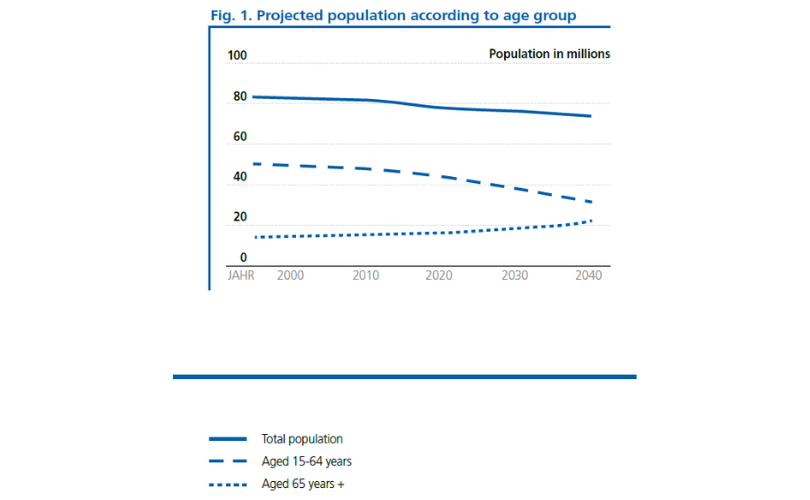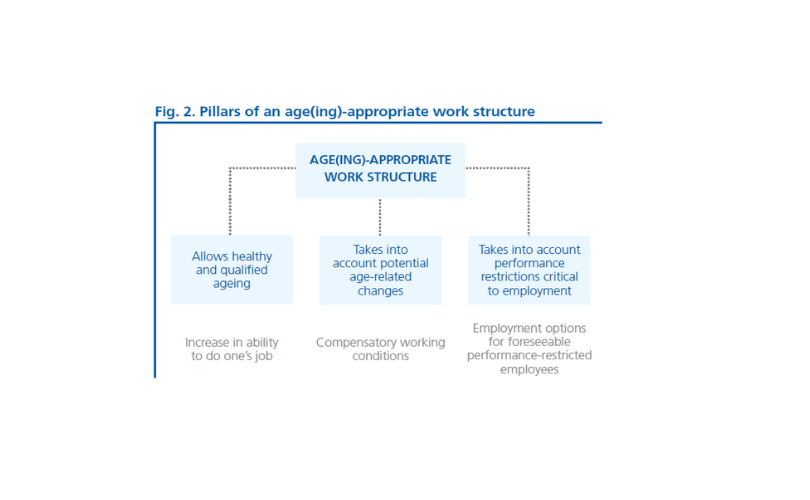A contribution by Dr.-Ing. Martin Braun, Fraunhofer Institute for Industrial Engineering (IAO)
BEING FIT IN OLD AGE – CHANGING THE WORK STRUCTURE
We met Martin Braun at our symposium when he gave his presentation on work design in socio-demographic change. He wrote a guest article on this topic for our magazine.
In an ageing society, the average age of employees is rising. Furthermore, there is expected to be shortages when it comes to recruiting young, new talents. In the coming twenty years, the proportion of the population of working age is going to decline more quickly that the overall population. As “intelligent machines” are not going to fully replace humans in terms of their communicative and creative capabilities in the foreseeable future, commercial decision makers have no option but to address the issue of the employability of older employees. One’s age should essentially not stand in the way of carrying out a task. Ageing will only become a problem in a person’s working life if employees perform one-sided, stressful routine activities over a period of many years.
Performance prerequisites in the ageing process
As part of the natural ageing process, a person goes through a period of maturity, in which they acquire skills, before the degenerative processes increase. The individual ageing process is marked by a change in specific performance and personality characteristics. For example, practical and specialist knowledge, as well as personal and social skills are generally more pronounced in older people. At the same time, health risks – e.g. damage to the spine or cardiovascular system – tend to increase with age.
Structuring work for older people
Work-related degenerative processes can be averted or at least moderated by means of preventative measures and training. This includes measures implemented as part of an ageingappropriate and age-appropriate work structure. An ageing-appropriate work structure is based on the ageing process, taking into account the entire working life of all age groups within the operation. An age-appropriate work structure on the other hand, focuses on age-specific differences and takes into consideration a change in performance based on life phases.
Three pillars of operational work structure
Three tried-and-tested approaches have emerged to implement this. The first is a structure with humane working conditions and supportive learning. This is because ergonomically designed workstations and regular changes in activities benefit all employees. The second is the anticipation of potential age-related changes. Additional requirements can be compensated for by retrofit modules (e.g. lighting, physical supports) at the workstation, or modifications to the scope of work. The third is to not allow age-related performance limitations become critical to employment. This can include a timely transition from physically demanding tasks to coordination or supervisory activities, or a reduction in night shift work. This results in companies facing the challenge of creating a healthy balance between customised humane performance prerequisites, working conditions, and a multitude of customer requirements. The aim is to coordinate these constantly changing factors according to the situation. This requires experience, awareness of the problem, social skills and a willingness to learn. However, it is worth investing in age(ing)-appropriate working conditions that can contribute to the development of personal performance capabilities in an ageing workforce. Companies can only increase their flexibility and innovative strength when this customer orientation is supported by a wealth of experience and the commitment of its employees.



0 Comments
No Comments